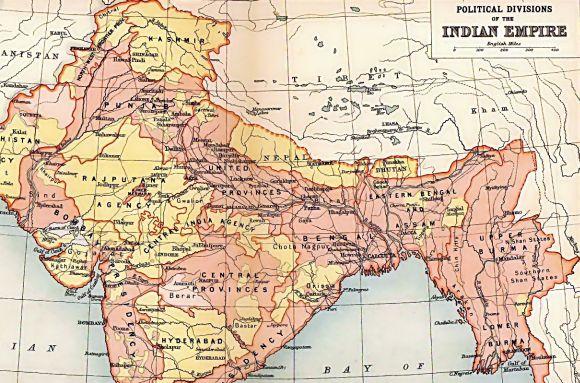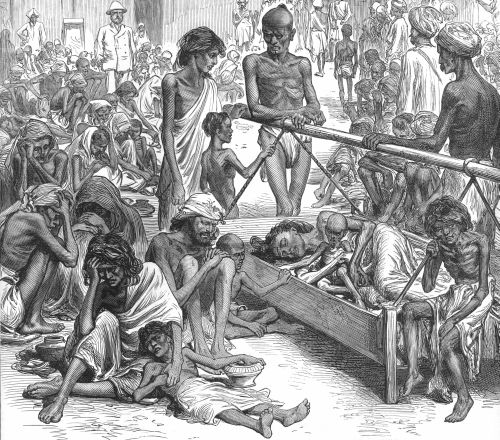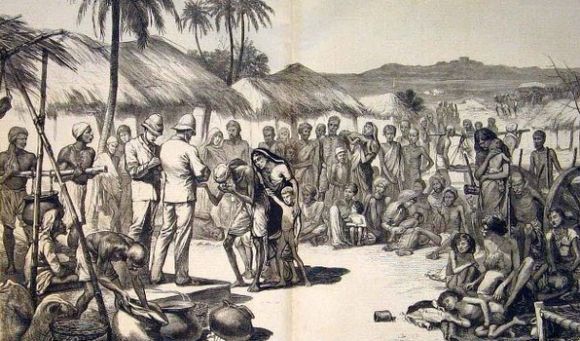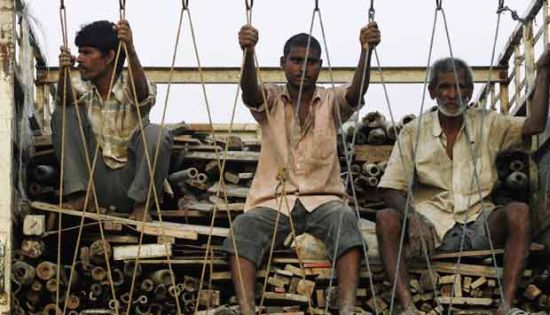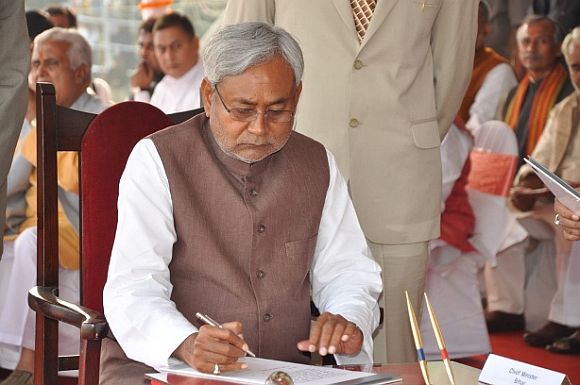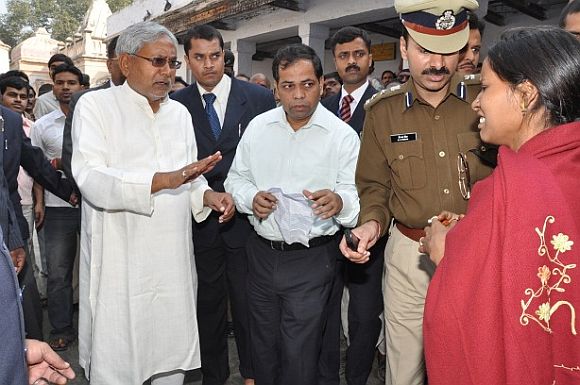 | « Back to article | Print this article |
Bihar@100: It's time to revive the heart of India
As Bihar celebrates its centenary, Gopal Krishna hopes the state can conserve, restore and manage its natural resources and desist from imitating a cannibalistic and toxic model of development
Once upon a time Bihar's history used to be India's history. She has been participant and witness of rise and fall of empires both within the country and in neighbouring Nepal and China.
In later years, Bihar became part of Bengal in 1732 after the death of Mughal Emperor Aurangzeb.
Exactly 50 years after that the British Parliament's East India Company laid the foundation of its rule by defeating the Indians at Plassey and Buxer.
As lands came under company control, the "violent" land tax was raised fivefold -- from 10 per cent to up to 50 per cent of the value of the agricultural produce. The hoarding of food grains was banned.
The food crops made way for opium poppy cultivation for export to countries like China. The farmers were made to grow indigo instead of rice. This reduced food availability.
The company facilitated establishment of monopolies in grain trading. This led to a catastrophic famine between 1769 and 1773 in Bengal that included Bihar. Alarmed by the famine of 1770, the East India Company built a huge granary for the British army in 1786.
Click on NEXT to read further....
Bihar@100: It's time to revive the heart of India
The massive structure is 29 metres high and the walls are 3.6 m wide at the base -- popularly known as Golghar -- is a prominent landmark of Patna in the vicinity of river Ganga.
Control of Indian affairs was complete by 1857, "India became a dependency" of British King Emperor and "she passed under British guardianship" as per British records.
India had become 'dependent' long before the formal declaration.
As a consequence British government's market policies had a field day resulting in famines in Bihar.
The famines of 1873 and 1896-7 took its toll because of excessive land-revenue demands and export of foodgrains. The money needed to combat famine was diverted towards British military effort in Afghanistan. It has been referred to as 'Late Victorian Holocausts'.
The supreme executive and legislative authority despite Indian Councils Acts of 1861 and 1892 and the Government of India Act of 1909 was with the British government.
Exercising this authority British King Emperor announced the creation of Bihar and Odisha as separate provinces with Patna as the capital on December 12, 1911 at Delhi Durbar after transfer of British India's capital from Kolkata to Delhi.
Click on NEXT to read further...
Bihar@100: It's time to revive the heart of India
It was an outcome of campaign by intellectuals who sought separation of Bihar from Bengal. Bihar remained a part of the Bengal presidency till March 22, 1912.
The Bihar legislative council was set up with 43 members by amending British Parliament's Indian Councils Acts of 1861 and 1892 and the Government of India Act of 1909.
Advocating Macaulayism, British India Viceroy Lord Chelmsford revealed the plot in his speech while inaugurating the new Indian legislature, consisting of the council of state and the legislative assembly at Delhi on February 9, 1921 after 'the glorious imperial half century'.
He said, "It has been the constant aim of the British government to extend to India the benefits and privileges of her own institutions."
In a foreword to a book titled Where is the Wealth of Nations?, published by the World Bank in 2006, it is contended: "The estimates of total wealth -- including produced, natural, and human and institutional capital -- suggest that human capital and the value of institutions (as measured by rule of law) constitute the largest share of wealth in virtually all countries."
Bihar@100: It's time to revive the heart of India
The inclusion of institutional capital, an intangible capital as wealth appears to be a deliberate exercise in epistemic corruption which commenced in World Bank's Expanding the Measure of Wealth (published in 1997) while assessing the wealth of the planet argued that collective institutions help explain unexpected differences between countries.
It will have us accept it as a natural law that "the share of natural capital in total wealth tends to fall with income, while the share of intangible capital rises'. Its apparent hidden implication is that the wealth of rich countries lies in its institutions but in poor countries the wealth lies in their natural resources.
In such a backdrop, World Bank's monetary and non-monetary interventions in Bihar need to be examined with circumspection.
Chelmsford quoted Lord Macaulay's Minute on Indian Education of 1835 stating, "England could not impart the ideas of the western world otherwise in her own languages carried with tremendous consequences" in order to establish the power of imperial ethos.
Click on NEXT to read further...
Bihar@100: It's time to revive the heart of India
These consequences include extent of forced migration from Bihar to other countries. In pre census era estimates about it remain uncertain.
It is fact that the migration did take place to Mauritius since 1819 and after slavery was abolished in the British colonies in 1834, a new system of slavery emerged as the system of indentured labour (Girmitiya).
A total of about 3,42,575 were sent from Calcutta during the period 1830-70 with emigrants drawn from Bihar and other north Indian states. The migrants from Bihar went to Fiji, the West Indies, Mauritius, British Guyana, Trinidad & Tobago and other places.
Before 1870 about 17 to 20 per cent of the labourers died before they reached their destination. The whole indentured labour system and the Indian Diaspora were indeed the consequences of British exploitation.
When Bihar recollects its history of 100 years, it will realize that it cannot comprehend its identity without situating itself in the historical context of at since early 18th century.
Bihar needs a blueprint to ensure that situations of famine, displacement, migration and humiliation do not arise in future.
When Bihar likes Trinidad & Tobago Prime Minister Kamla Persad Bissessar, who visited Bhelupur in the Buxar district of Bihar in January 2012, it cannot forget that her great grandfather Ram Lakhan Mishra was compelled to migrate as a Girmitiya labourer to Trinidad and Tobago, then a British colony in the Caribbean islands in 1889. It cannot feign ignorance or remain callous about the economic policies that lead to such migrations. There has been internal migration as well and their records in census data.
Click on NEXT to read further...
Bihar@100: It's time to revive the heart of India
Bihar must learn from at least last 300 years of its impoverishment and subjugation. State government ought to make a concerted effort to reach out to those who left and are leaving the state for other countries in unfortunate circumstances.
The lessons they learnt on their voyage away from their roots since then must be recorded for posterity.
It will have to remember how partition of India and the subsequent creation of Pakistan in 1947 led to the displacement of the Biharis, and with the creation of Bangladesh in 1971, the Biharis were forced to flee a second time.
The forced population displacement of the Bihari refugees of Pakistan in Bangladesh amounts to their denationalisation in Pakistan, which has made them de facto stateless refugees.
This holds true for Bangladesh as well.
Within India too, the kind of racist assault they face in states like Maharashtra and in other non-Hindi speaking parts of the country merits sensitive engagement with political imagination because a spark neglected burns the house for good.
Click on NEXT to read further...
Bihar@100: It's time to revive the heart of India
Bihar has neglected its ecological space and its river basins. The state government has proposed to rewrite the geography of Bihar by agreeing to divert its rivers to interlink them.
It has chosen not to learn from blunders of structural interventions in Kosi river basin which has become the location of South Asia's biggest environmental crisis and has failed to tame the arrogance of hydrocracy.
This is creating an ideal situation for forced displacement and migration in its myopia.
On 100 years of its administrative creation, Bihar has to learn from the natural flow of the rivers and flow with them instead of mutilating them.
Hills and small mountains in Bihar are fast vanishing due to stone quarry mafia.
Health of rivers like the Sone is threatened due to unregulated sand mining.
The construction of multi-storey buildings on the bank of the Ganga near Dujra and Digha and government's River Front Development Scheme for developing areas on the banks of the Ganga in Patna is ecologically insane.
The state government should be persuaded to desist from such plans in ecologically fragile flood plains.
Click on NEXT to read further...
Bihar@100: It's time to revive the heart of India
Ahead of its 100th birth anniversary, Union Agriculture Minister Sharad Pawar informed the Parliament on March 20, "As per the reports received from the state government, the yield of wet paddy has been recorded at 22.4 tons per hectare and that of dry paddy at 20.16 tons a hectare in the district of Nalanda, Bihar. It has surpassed the yield of 19 tons per hectare, which was recorded earlier in China."
This demonstrates that Bihar needs its own model of growth.
It is a historical fact that Bihar's creation was announced at the Darbar of the British ruler. In Persian language (its use was stopped by British company in 1838), Darbar refers to the court of an Indian ruler. When the same word was used by the British King, it meant a public reception held by an Indian prince or a British governor or viceroy in India.
Now that the Janata Darbar is being held by the Bihar government, the word has assumed a different meaning.
Click on NEXT to read further...
Bihar@100: It's time to revive the heart of India
While the motive for the same may have been sacred, the fact is aggrieved citizens who gather there are being made to appear like subjects. An effort is required to change the current imperial architecture of dialogue so that the intent is genuinely reflected as a democratic process which others can emulate.
If India is looked at as a human being, one finds that Bihar is situated in the place of heart.
Not surprisingly, John Houlton authored a book titled Bihar: The Heart of India, published in 1949.
If Bihar can conserve, restore and manage its natural resources and desist from imitating a cannibalistic and toxic model of development, Bihar's history will once again be India's history.
If India's health is a genuine concern, her heart merits greater sensitivity.
Click on NEXT to go further...
